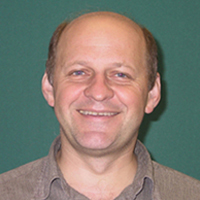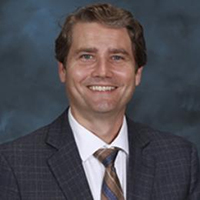Finding Fantastic Treasures
The COHERENT experiment continues to successfully coax neutrinos to give up their secrets, and in the process pushes the advent of more sophisticated detection tools, a specialty of Physics Professor Yuri Efremenko. In research published in Physical Review Letters, the COHERENT collaboration established the existence of a new kind of interaction where low-energy neutrinos interact with an argon nucleus in a process called coherent elastic neutrino-nucleus scattering, or CEvNS, pronounced "sevens." The announcement came from Oak Ridge National Laboratory (ORNL), home of the Spallation Neutron Source (SNS), the experiment’s home base.

Neutrinos are the lightest elementary particle, with properties that defy explanation within the Standard Model of electro-weak interactions. Physics Professor Yuri Efremenko (pictured left) holds a joint appointment at ORNL and has a long and distinguished tenure studying these particles. He believes neutrinos are the best avenue to discover a new, unknown-for-us sector of particle physics. He has been at the forefront of COHERENT’s research for nearly two decades, literally helping build the framework for the experiment. (In 2018 he won honors from both UT and the College of Arts and Sciences for his outstanding research contributions.)
The latest research is a continuation of the 2017 work that graced the cover of Science magazine, where the COHERENT collaboration used the world’s smallest neutrino detector to provide the first evidence of the CEvNS process. For this recent work, Efremenko led development of more sensitive photodetectors and is quoted in the ORNL announcement:
"Argon provides a ‘door’ of sorts," he said. "The CEvNS process is like a building that we know should exist. The first measurement on cesium and iodine was one door that let us in to explore the building. We’ve now opened this other argon door."
The argon data is consistent with the Standard Model within error bars. However, increased precision enabled by bigger detectors may let scientists see something new.
"Seeing something unexpected would be like opening the door and seeing fantastic treasures," Efremenko added.
ORNL Physicist Jason Newby, (pictured right) a 2003 UT Physics PhD graduate, serves as the laboratory’s lead for the COHERENT team and weighed in on how this work transforms our understanding of the subatomic world.
"We’re looking for ways to break the Standard Model," he said. "We love the Standard Model; it’s been really successful. But there are things it just doesn’t explain. We suspect that in these small places where the model might break down, answers to big questions about the nature of the universe, antimatter and dark matter, for instance, could lie in wait."
Newby and Efremenko led the development of "Neutrino Alley" beneath the mercury target at the SNS to serve as a laboratory for studying the neutrinos created as a byproduct from the world’s brightest pulsed neutron source. The "alley" is home to a scalable detector called CENNS-10, which sits 90 feet (the same distance from third base to home plate in baseball) from a low-energy neutrino source. They can monitor data collection remotely to work around COVID-19 challenges and are looking to add an even larger detector in the future to expand their capabilities and bring into sharper relief new and interesting physics based on what neutrinos can tell us. As such, the data gleaned from COHERENT has implications for scientists beyond those who focus on elementary particle physics.
"This is a way to measure the distribution of neutrons inside nuclei and the density of neutron stars," Efremenko said. "It’s a contribution to nuclear physics and astrophysics because the processes are very similar."
These latest results appear in Physical Review Letters in the paper “First Detection of Coherent Elastic Neutrino-Nucleus Scattering on Argon.”
Adapted from “Compelling evidence of neutrino process opens physics possibilities” from Oak Ridge National Laboratory. Read the full story, with details about the findings and the COHERENT experiment, at ORNL’s website. Photo of Jason Newby also courtesy of ORNL.